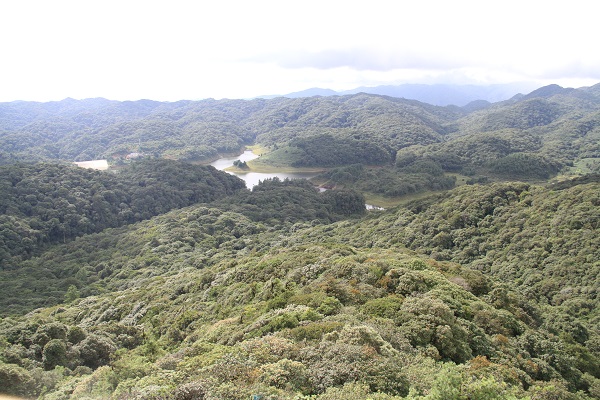Understanding tree species responses to biotic and abiotic factors is fundamental for stronger predictions of community assembly and dynamics. However, there remain many challenges, including a failure to investigate whether there is evidence for key hypothesized life‐history tradeoffs and to link these tradeoffs to functional traits.
In a study published in Journal of Ecology, researchers from Xishuangbanna Tropical Botanical Garden (XTBG) designed experiment to quantify the growth responses of seedlings in a monsoonal subtropical forest to varying abiotic and biotic conditions in space and time. They wanted to determine whether fundamental tradeoffs relating to growth can be detected and if functional traits can predict where species fall along these tradeoff axes.
By using three years of seedling census data from Ailaoshan 20‐ha subtropical forest dynamics plot in a diverse subtropical forest in Yunnan, the researchers constructed models for individual seedling growth in response to abiotic and biotic factors and correlated these responses with functional traits at species level.
The researchers tried to seek whether species exhibit a fundamental tradeoff in their ability to positively respond to increased resources and their ability to tolerate conspecific neighbors and whether this tradeoff can be characterized by functional traits.
They found that seedling growth was relatively higher in the dry season than in the rainy season, likely due to more severe negative impacts of conspecific neighbors during the rainy season when abiotic resources are more plentiful.
Furthermore, they found evidence for a fundamental tradeoff between the ability of species to increase growth in response to light availability versus their ability to mitigate the negative impacts of conspecific neighbors and that this tradeoff can be predicted upon the basis of functional traits.
Lastly, the tradeoff could be predicted by tissue dry matter content, but not by other commonly measured functional traits.
“Our findings indicate that species that can grow quickly in high light environments also tend to suffer more conspecific negative density dependence. Such tradeoffs are critical for explaining population and community dynamics and the maintenance of biodiversity in diverse ecosystems,” said Prof. CAO Min, principal investigator of the study.
Contact
CAO Min Ph.D Principal Investigator
Key Laboratory of Tropical Forest Ecology, Xishuangbanna Tropical Botanical Garden, Chinese Academy of Sciences, Mengla, Yunnan 666303, China
E-mail: caom@xtbg.ac.cn
Ailaoshan 20-ha forest dynamics plot. (Image by SONG Xiaoyang)

